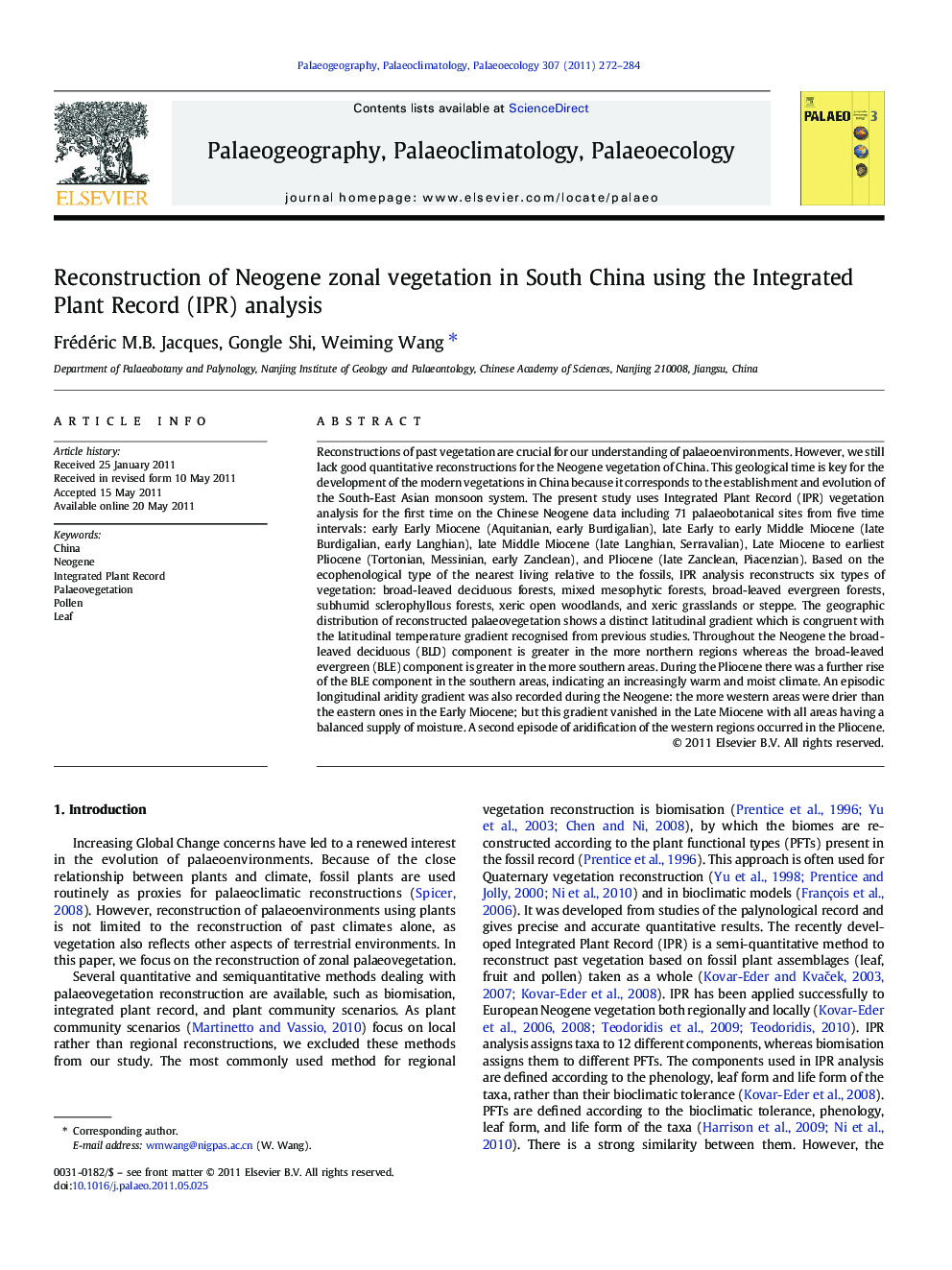| کد مقاله | کد نشریه | سال انتشار | مقاله انگلیسی | نسخه تمام متن |
|---|---|---|---|---|
| 4467305 | 1622253 | 2011 | 13 صفحه PDF | دانلود رایگان |

Reconstructions of past vegetation are crucial for our understanding of palaeoenvironments. However, we still lack good quantitative reconstructions for the Neogene vegetation of China. This geological time is key for the development of the modern vegetations in China because it corresponds to the establishment and evolution of the South-East Asian monsoon system. The present study uses Integrated Plant Record (IPR) vegetation analysis for the first time on the Chinese Neogene data including 71 palaeobotanical sites from five time intervals: early Early Miocene (Aquitanian, early Burdigalian), late Early to early Middle Miocene (late Burdigalian, early Langhian), late Middle Miocene (late Langhian, Serravalian), Late Miocene to earliest Pliocene (Tortonian, Messinian, early Zanclean), and Pliocene (late Zanclean, Piacenzian). Based on the ecophenological type of the nearest living relative to the fossils, IPR analysis reconstructs six types of vegetation: broad-leaved deciduous forests, mixed mesophytic forests, broad-leaved evergreen forests, subhumid sclerophyllous forests, xeric open woodlands, and xeric grasslands or steppe. The geographic distribution of reconstructed palaeovegetation shows a distinct latitudinal gradient which is congruent with the latitudinal temperature gradient recognised from previous studies. Throughout the Neogene the broad-leaved deciduous (BLD) component is greater in the more northern regions whereas the broad-leaved evergreen (BLE) component is greater in the more southern areas. During the Pliocene there was a further rise of the BLE component in the southern areas, indicating an increasingly warm and moist climate. An episodic longitudinal aridity gradient was also recorded during the Neogene: the more western areas were drier than the eastern ones in the Early Miocene; but this gradient vanished in the Late Miocene with all areas having a balanced supply of moisture. A second episode of aridification of the western regions occurred in the Pliocene.
► Neogene palaeovegetations of China are reconstructed using the IIPR analysis.
► The palaeovegetations reconstructed in China show a clear latitudinal gradient.
► There is an East–West aridity gradient that is less pronounced in the Late Miocene.
Journal: Palaeogeography, Palaeoclimatology, Palaeoecology - Volume 307, Issues 1–4, 1 July 2011, Pages 272–284